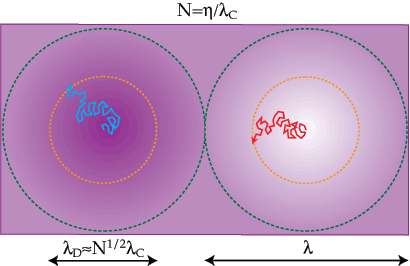
In reality, the coupling between the baryons (electrons) and the photons is imperfect since the photons possess a mean free path to Compton scattering. As the photons random walk through the baryons, hot and cold regions are mixed. Fluctuations damp nearly exponentially as the diffusion length overtakes the wavelength.
Figure: Diffusion Damping
At last scattering, the ionization fraction decreases due to recombination, thus increasing the mean free path of the photons. The effective diffusion scale becomes, by definition, the thickness of the last scattering surface providing a cut off in the anisotropy spectrum.
Figure: Damped Spectrum from Hu & White (1997)
Since this scale is sensitive to the baryon content and the thermal history while being almost entirely independent of the model for structure formation, it provides a valuable tool for measuring these cosmological quantities as well as the curvature of the universe.